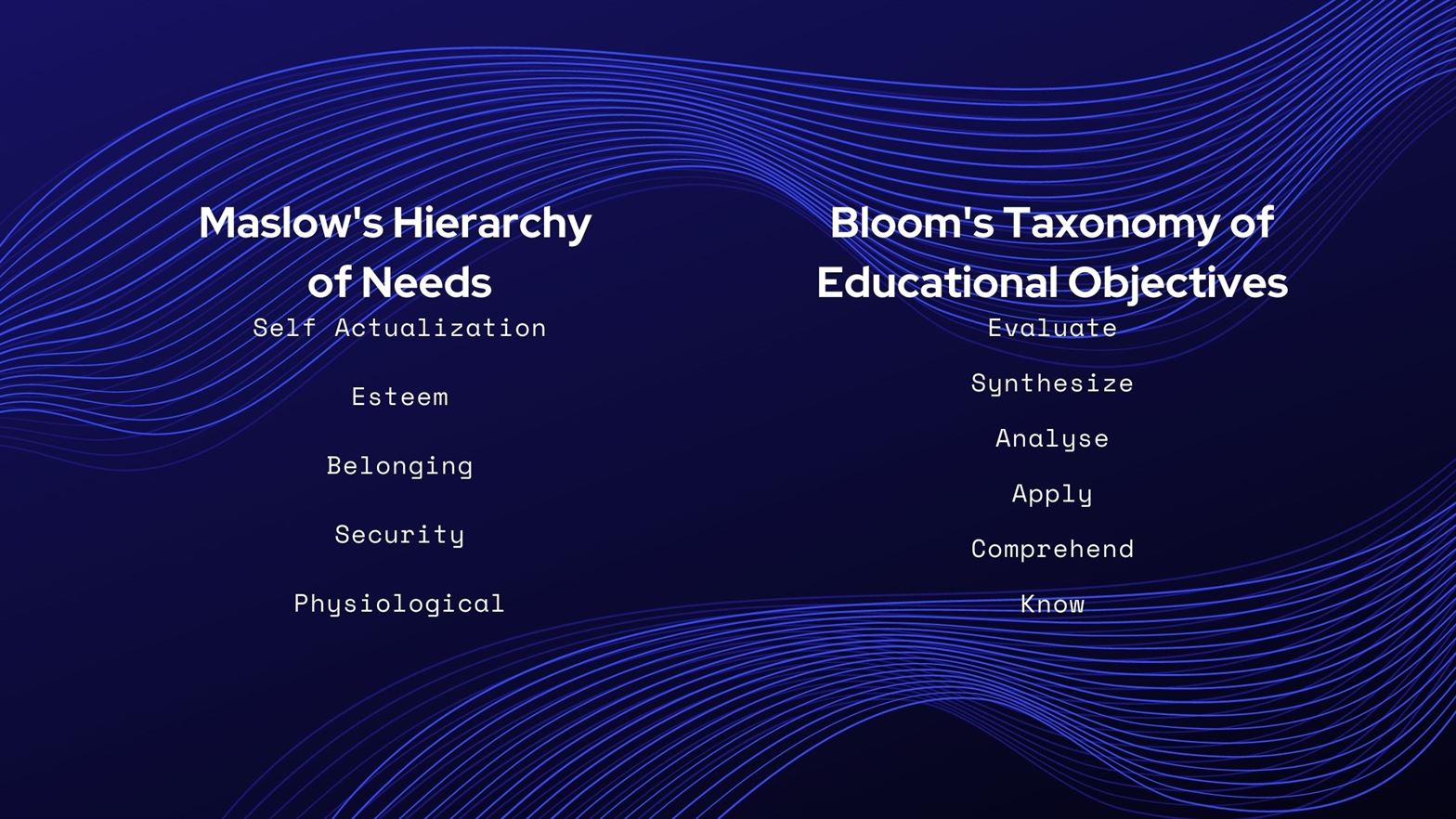Based on a recent survey, the current situation has had a Mental health impact both on students and teachers, there is likelihood that this will be a long term impact. For teachers the line between home and school was eliminated, while they had to take care of their students they had to tend to their own children. Students faced a similar dilemma, it has been observed that they slowly lost interest in academics and were forced to pay attention online, some regressive behaviors were observed, students were forced to leave to their home countries with their parents, some were grieving for their near ones who might have lost their life, others observed financial crisis at home when parents lost their jobs.
The idea Maslow before Blooms refers to the 2 American Psychologists of the 20th century. Please breeze through the image above and read through Maslow's Hierarchy of Needs and as educators we are familiar with Bloom's taxonomy of Educational Objectives.
Let's first look at Maslow's 2 lower layers on the Maslow’s hierarchy- Physiological and Security, students who have these 2 layers compromised are usually seen not Blooming at school. Some very basic needs like air, water, clothing, body needs, a safe place to relax and no mental stress are basic needs to be met for any student before any sort of academic challenges.
So let's understand the connection between Maslow and Blooms? Teachers are the ones who address students' diverse needs in a classroom, they teach a whole student who has real emotions and needs. For example, students who struggle with low self-esteem issues, teachers observe a poor behavior pattern, disruptive and non-engagement, similarly students who lack stability in the family usually are seen to be lacking in social skills, emotional regulation, aggression they also indicate some attention seeking behaviors. However, when teachers work in a classroom with students who are entirely able to learn in class that is when Bloom's taxonomy works at its best.
This takes us to our next Question -How do we as educators Maslow before Blooms and the connection with Covid 19 and the sudden shift to online learning and teaching? Students are experiencing this sudden change where the school is at home, earlier struggling families could depend on the school to assist with the 3 lower tiers example- Physiological, Security & Belonging, however this is not the case anymore and families have to manage the impact this is having on students’ academic learning. The stresses always existed in these families however the impact is different when students were at school and now at home. Therefore, Maslow before Blooms supports the idea that all human beings should have their basic needs met (not just for students but all human beings), schools have been providing to students for so many years and focusing on holistic learning. What is the role of teachers to support Maslow before Blooms?
- It is important that a student receives more encouragement from a teacher.
- Teachers might not be able to solve problems in the broader community context for the student, therefore involve parents.
- Empathetic teaching- get to know your students, interest in their strengths and areas to develop, family background.
- Student autonomy-create a culture where students can ask questions without being afraid.
- Keep the routine on also during online teaching that was in place when the students were on the campus physically.
- Frequent Brain breaks help with focus.
- Collaboration with School Counselors who can support with social-emotional activities and strategies.
- Teaching SEL skills to students-
- Self-awareness- Teaching students how to self-evaluate and recognize their personal emotions and the impact they have on their behavior, communication and thoughts. In online learning small groups can be created where students can share their feelings.
- Self-management- We are all aware that a school is a great place for students to socialize and here students get exposed how to handle and regulate their personal emotions, behaviors and thoughts. Intrinsic motivation is important for students to stay on track during times like this therefore assignments can focus on giving students agency examples rather than assigning students a book to read give them a list of books and they can choose from the option, more project based learning gives them opportunities to collaborate with their peers. Competent tasks and challenging students keeps them engaged and motivated
- Relationship skills- Giving students an opportunity to work in groups is a great way to encourage students to develop harmonious relationships with peers, they learn how to negotiate and develop communication skills. They understand and apply ethical norms of behavior.
- Responsible decision making- To be able to make good decisions students need to be open minded, good listeners, having clear priorities and ready to consider other people's perspective.








